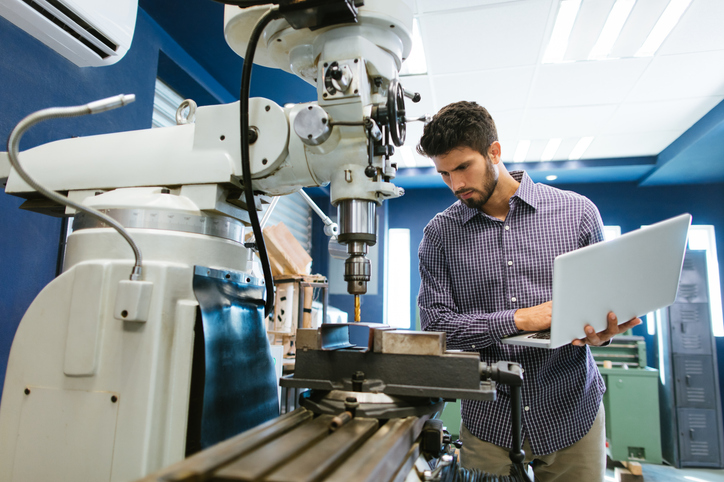If family businesses are renowned for conservative thinking and a lack of vision, no-one’s told Henry Amar, the chairman of food supplier RH Amar. The company saw its revenue expand by 33 per cent last year to £50 million.
‘My father’s mantra was that the best environment for us was the first phase of a recession. Although people may stop buying cars and televisions, they will still console themselves with buying decent food,’ says Amar.
One of the reasons for the latest spurt of growth is that a competitor went into liquidation. ‘We won substantial distribution as a result,’ he says. ‘But if you take that out, our growth was still in the region of five to six per cent, so even if we hadn’t won that business, we would still be moving forward faster than the market average.’
The point is that the company is well capitalised and has been able to seize on the opportunity, while also hiring more staff, increasing warehouse space by 65 per cent and upgrading IT systems.
According to Amar, whose son has been with the company for nine years and was made vice-president in September, the innate continuity of being a family business has helped the company win contracts and grow. ‘Suppliers see us as a company that’s not going to be merged, taken over or sold because it’s in the hands of the family.’
Sometimes, however, fresh blood is needed to take a company to its next stage of growth. Laithwaites Wine was set up in 1969 by Tony Laithwaite and today has sales in the region of £240 million. Back in 2007, the owners realised it might be time to bring in someone with fresh ideas and so they hired Simon McMurtrie as the new CEO.
McMurtrie saw that the company had lost its way, mainly through its bid to expand the business internationally. Although the idea was right, the execution had gone awry.
‘Tony Laithwaite felt the company needed to face a whole new challenge as the UK wine market had become mature,’ says McMurtrie.
But problems started to arise when a US company was acquired. ‘It was the entry point into the American market, but unfortunately the previous shareholders were left as the managers of the business.’
Inevitably, the new company didn’t produce the desired results and soon it began to look like an expensive mistake. But there were other issues too, such as selling 3,500 varieties of wine and employees who had been at the company for too long. When McMurtrie joined, the company was on its way to making its first loss for 22 years.
Quickly, he identified the crisis points, cutting inventory costs by drastically reducing the range of wines and sending one of the directors from the UK to take charge of the US office. ‘No one had thought about how we would plant our culture in an American company,’ he says.
Cut hard, cut deep
As important as these changes were, he knew he had to go further. ‘The company I joined was considered to be family owned and friendly, which is fine. However, there were a lot of bright and capable people in the company who felt stifled, seeing some of their colleagues who weren’t so talented being allowed to poodle along.’
McMurtrie says 250 people left the business. Since those cuts were made, he’s hired 150 people, bringing the total staff number to 1,200. The new hires include a chief finance officer, a chief information officer and a global wine director who was previously head of wine buying at Waitrose.
The swift, dramatic changes worked and Laithwaites Wine saw profits of £11 million on sales of £240 million for the most recent financial year-end. Ironically, 23 per cent of that now comes from global sales as the company has seen revenues soar in Poland, Hong Kong, Australia, Switzerland, Germany and the US.
For McMurtrie, the key to keeping the fire in the belly of a company, especially one that has lots of staff, is to avoid developing a staid, corporate feel. ‘As you build a company up and bring in professional reporting structures and performance indicators, you can easily knock the stuffing out of the business. It’s often unintentional, but it can easily happen and that’s when things go wrong.’
Sense of direction
At Executive Offices (EO), an altogether different kind of growth challenge is being faced. Essentially, the bottom has fallen out of the market for serviced offices and that means new sales channels need to be found.
John Drover, a director at EO, says: ‘It’s been a tough market for us as much as anyone else during the past two to three years.’
Slowly, Drover is seeing signs of improvement. ‘We’re nowhere near the levels we were at in 2006 and 2007 but we’re getting a healthy level of occupancy. Like a lot of businesses, we go from euphoria one week to hysteria the next.’
For the last financial year, revenue was £58 million and although the market may be picking up, he says that sales will remain at a similar level for both this year and next. The puzzle to solve is how to keep the company moving forwards.
‘We’re trying to counteract the market by offering new services, such as our virtual offices,’ he says, noting that EO has been conscious of the need to invest in technology to make sure the service levels are at the right standard.
Another important factor is to try and maintain staff morale, which can easily flag when employees realise the business they work for is fighting to stand still. ‘It’s something we take seriously and we do invest in training. At our head office, we invest in people’s future by improving their skill set.’
Tellingly, Drover says that EO is having to ‘reinvent itself as a business’ to overcome the challenges thrown up in the new economy.
Building traction
At Brightpearl, the focus is on convincing customers to embrace the unknown. The four-year-old UK company, which secured venture capital investment of £1 million in the summer, offers a range of cloud-based accounting and CRM solutions.
Co-founder Andrew Mulvenna says: ‘ I think the awareness has improved in the past year. Previously, people didn’t even know about the cloud; now they’re asking about security and usability, which is encouraging for us.’
Former Dragons’ Den star Doug Richard is a non-executive director for Brightpearl. Mulvenna says that Richard proved himself to be a good sounding board when courting the venture capital firms for investment.
‘It was the first time we had done it, so we had a lot to learn. But we had some really good advice from Doug and he was instrumental in raising our profile; mentoring us as business owners in negotiating the deal.’
Apart from winning customers, Mulvenna says that hiring the right people will become harder as the business grows.
The new investment has seen the company go from five to 22 staff, which includes bringing on board Silicon Valley veteran Salman Malik as CEO, and CTO Ben Halstead, who was head of software architecture at BSkyB’s web division and the application architect for Lastminute.‘When we spread our wings globally, we will need regional teams and so we’ll have to identify that kind of talent around the world.’
At Sabien, it’s almost as if the spark of innovation burns too brightly. The company has developed green technology which is supposed to reduce carbon emissions and energy usage by making boilers run more efficiently.
Clients include BT, RBS and Aviva but sales remain undeniably modest at under £1 million, even though it was founded six years ago and is listed on AIM.
Part of the problem, says chief executive Alan O’Brien, is convincing a conservative industry about the benefits of the technology.
‘It’s a difficult space,’ admits O’Brien. ‘The engineering community is split in terms of green technology and the energy market in the UK is one of the most mature.’
Changes in legislation, such as the Carbon Reduction Commitment legislation, which forces large businesses to measure and reduce energy usage, should work in Sabien’s favour.
The company is winning contracts but O’Brien is the first to admit that bringing a new, somewhat alien technology to market is never going to be straightforward.
Rejuvenating the model
For a larger entity with an established customer base, the problem is always going to be how to encourage new ideas and fresh thinking. Amar recalls that when he took over from his father in 1983, there were distinct changes he wanted to introduce to shake up and modernise the business.
‘We had a tiny sales force back then and so I made sure we had more people on the ground. Also, we had been using third-party warehouses and distribution companies. I brought that in-house and we were able to control our own inventory.’
These simple decisions made a big difference to the bottom line of the company. ‘I don’t regret doing any of that,’ says Amar.
As for McMurtrie, he says the founder of Laithwaites Wine, Tony, appreciates how the business has evolved over the past couple of years.
‘He told me that the company used to be something of stroppy adolescent and I’ve helped it to grow up and take itself more seriously.’






